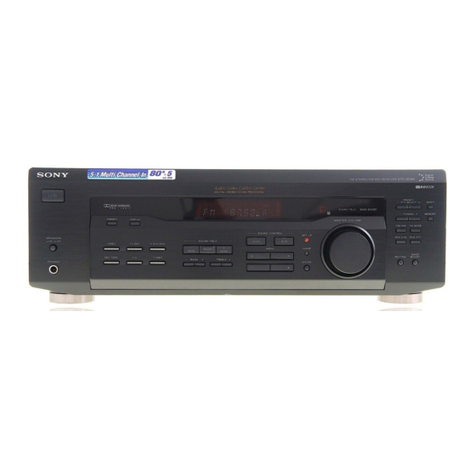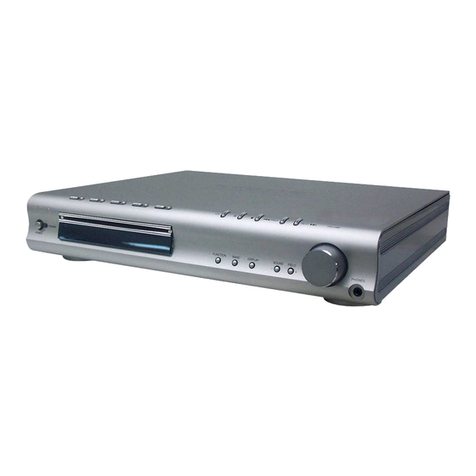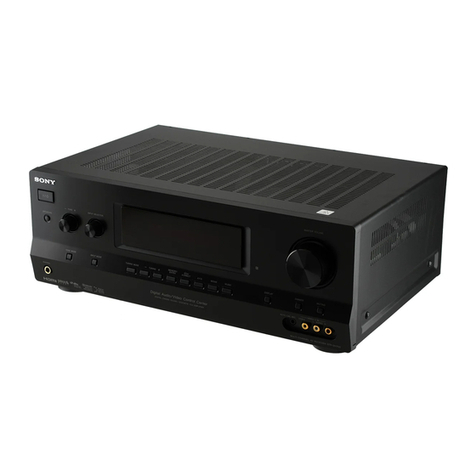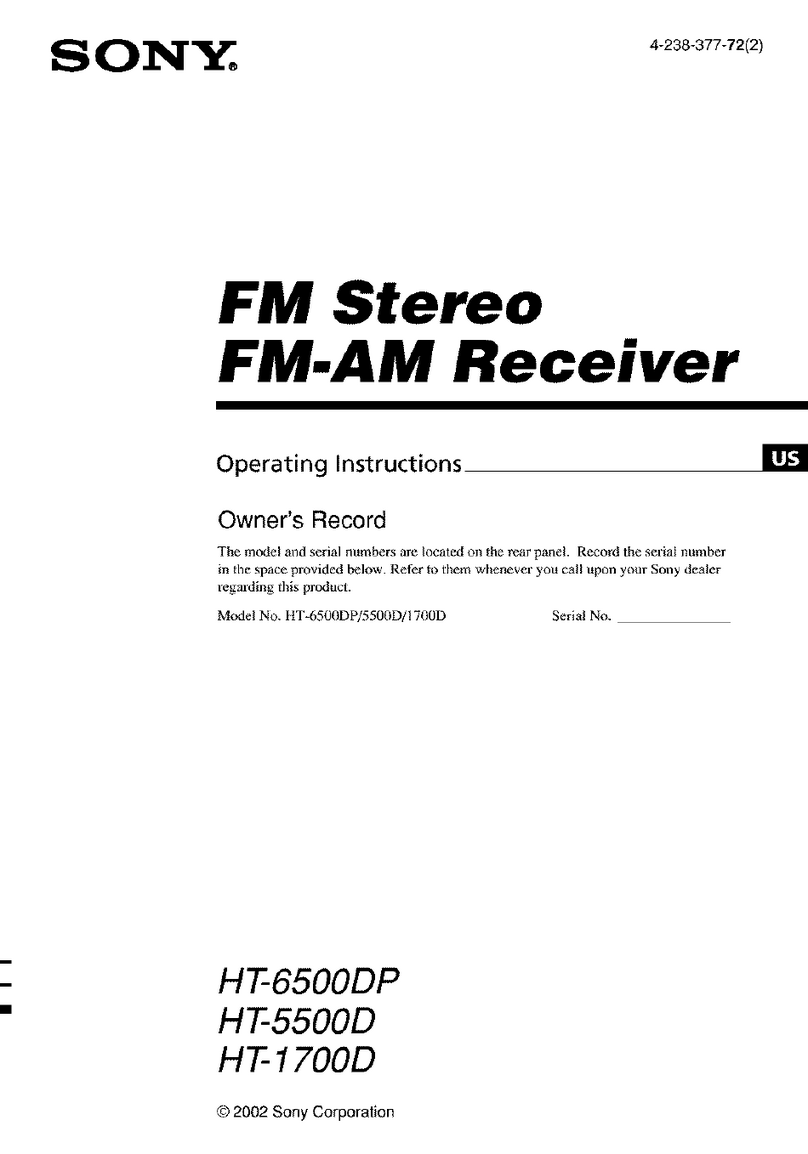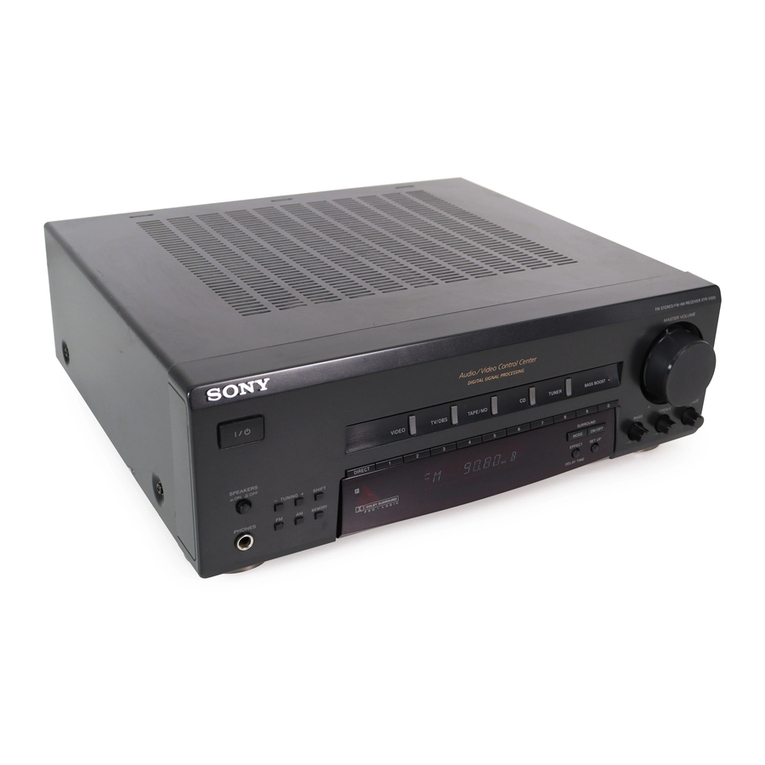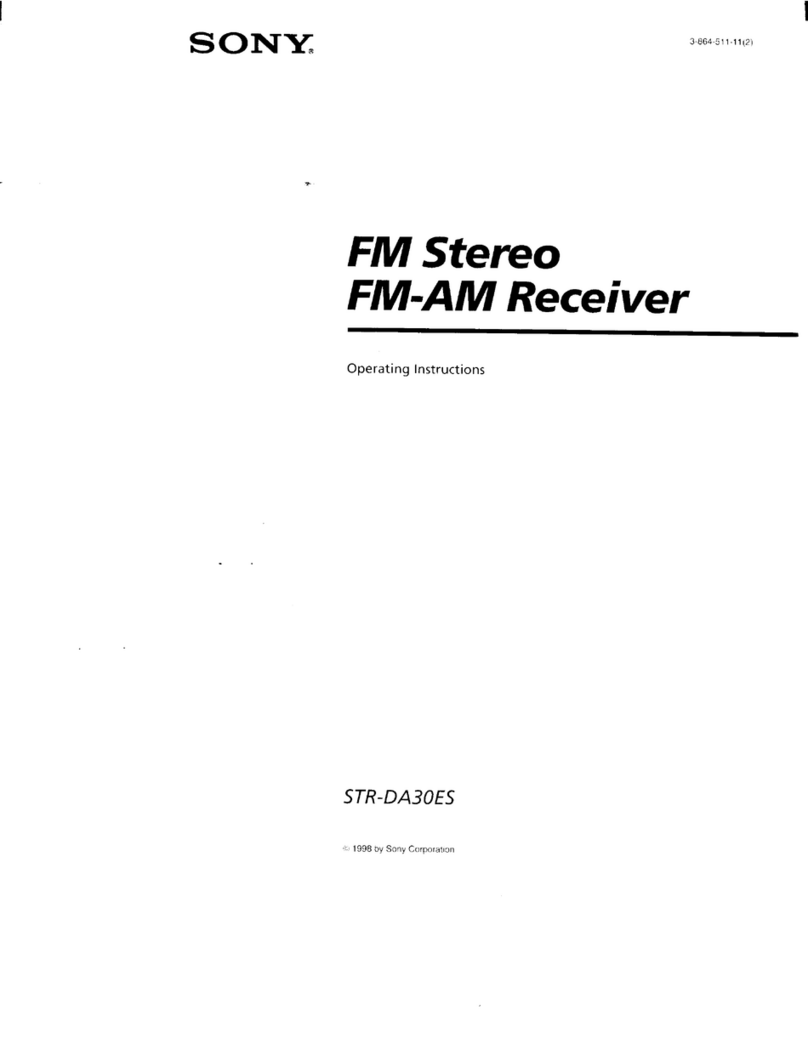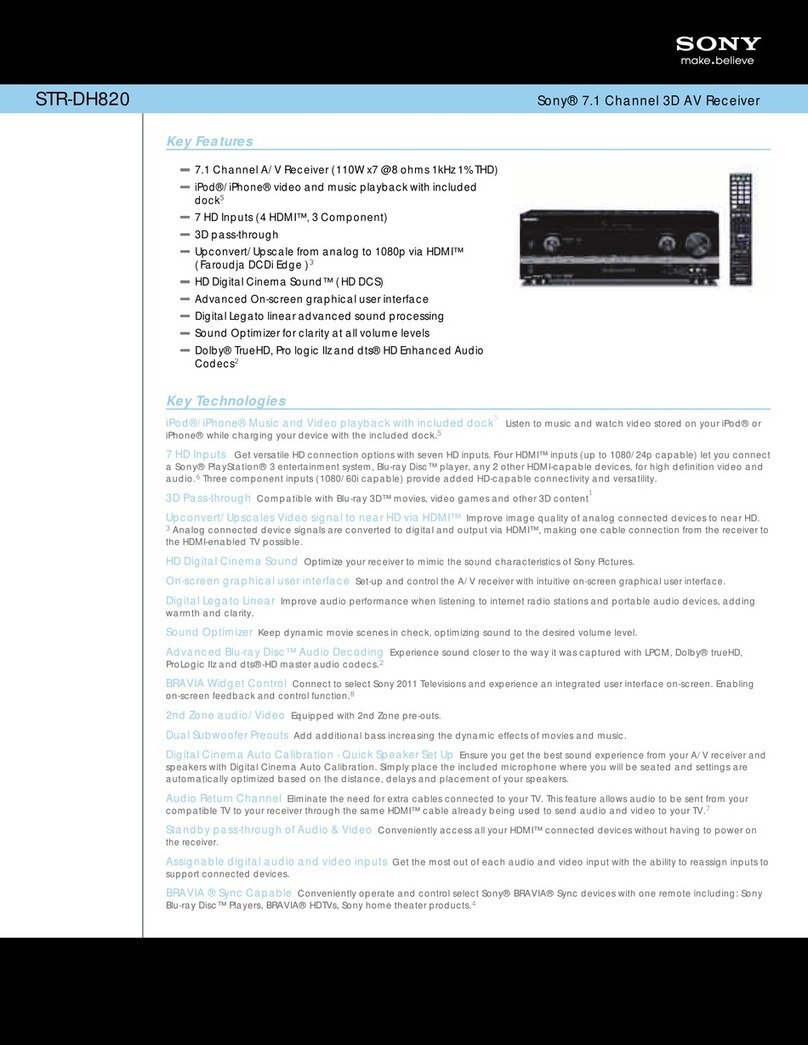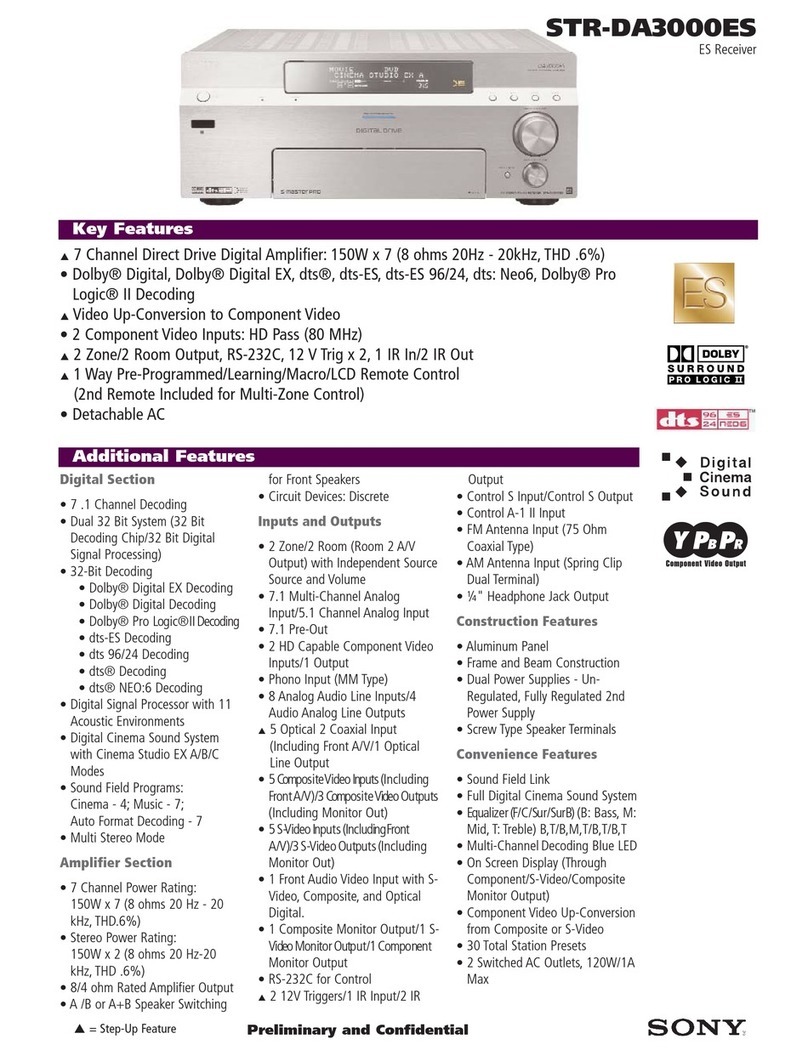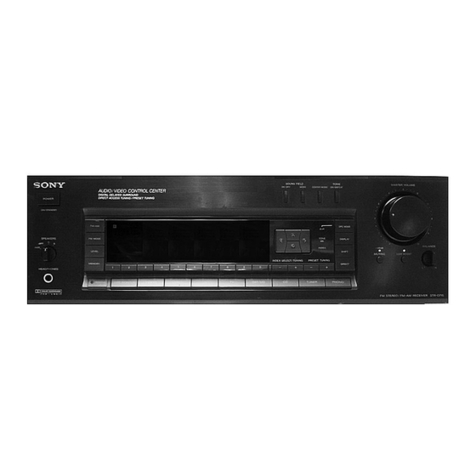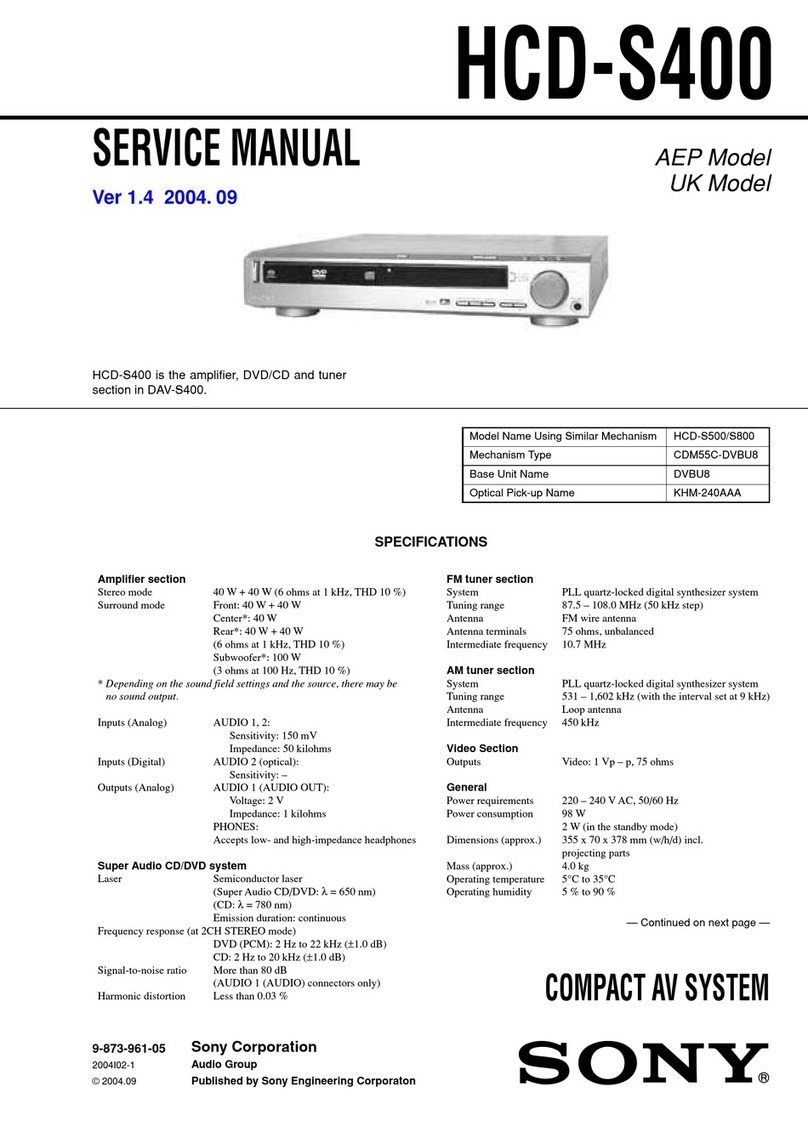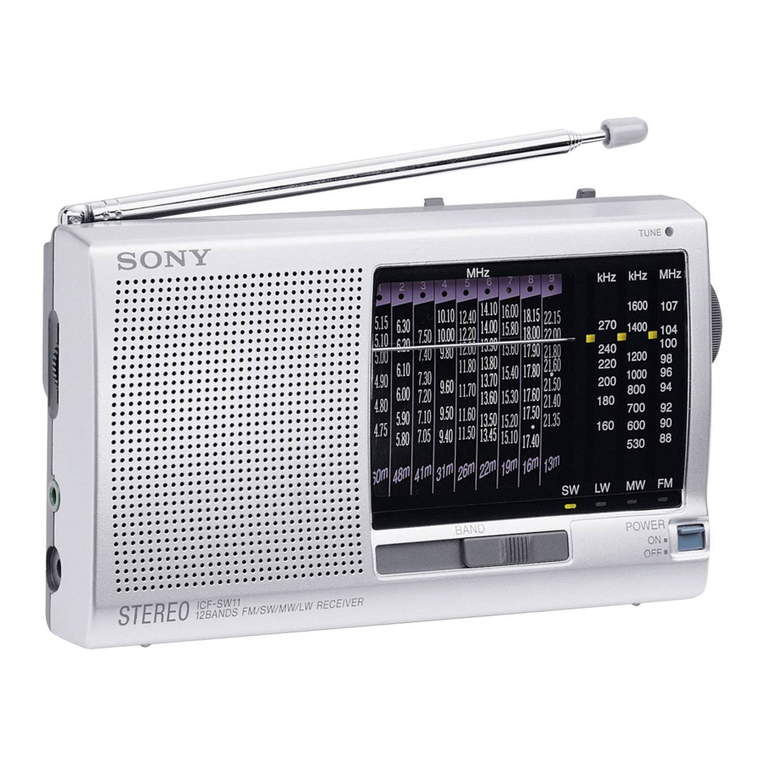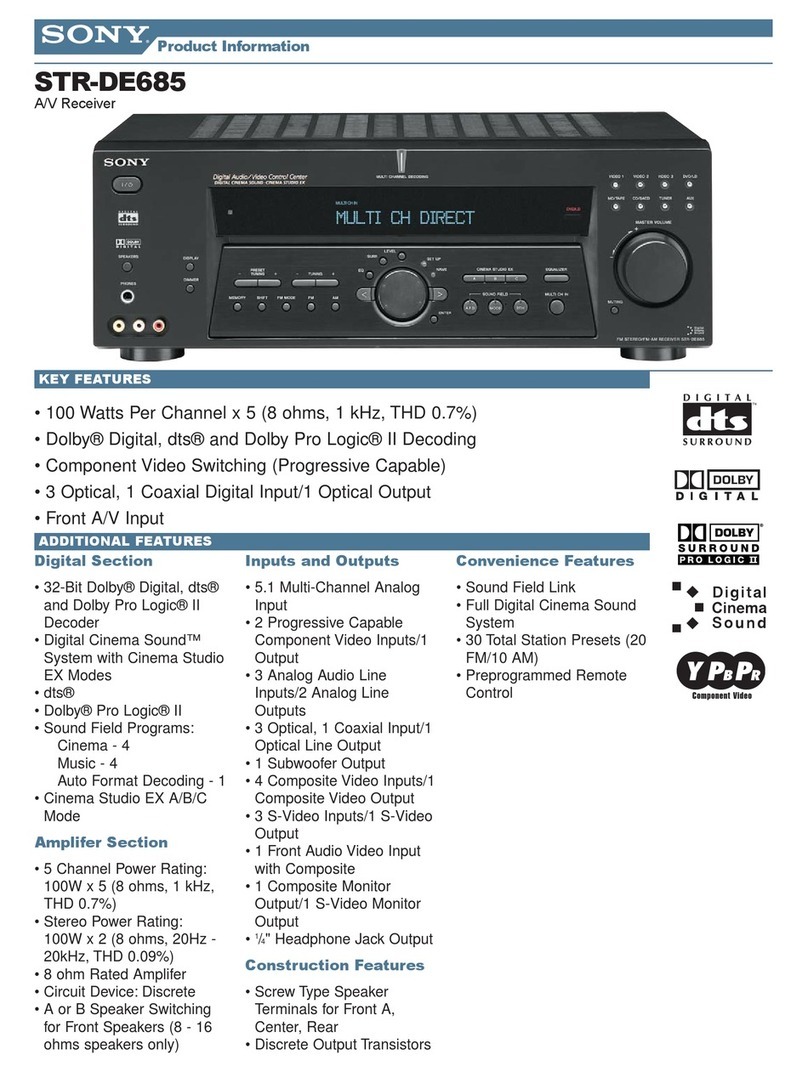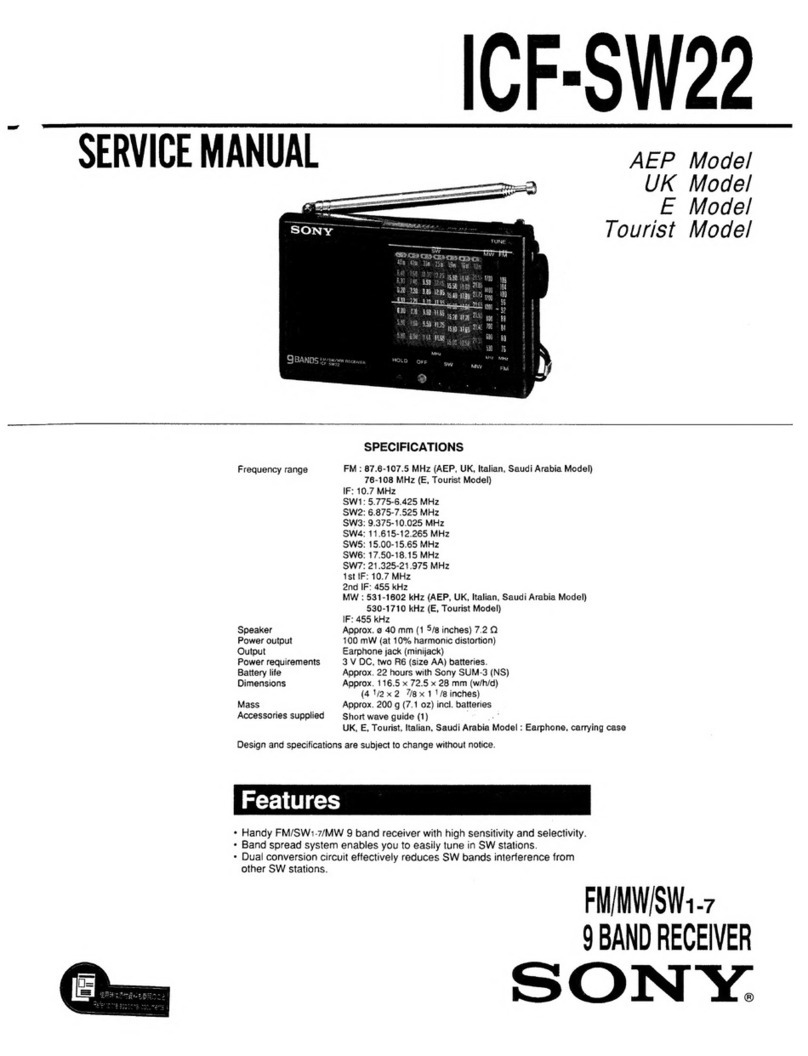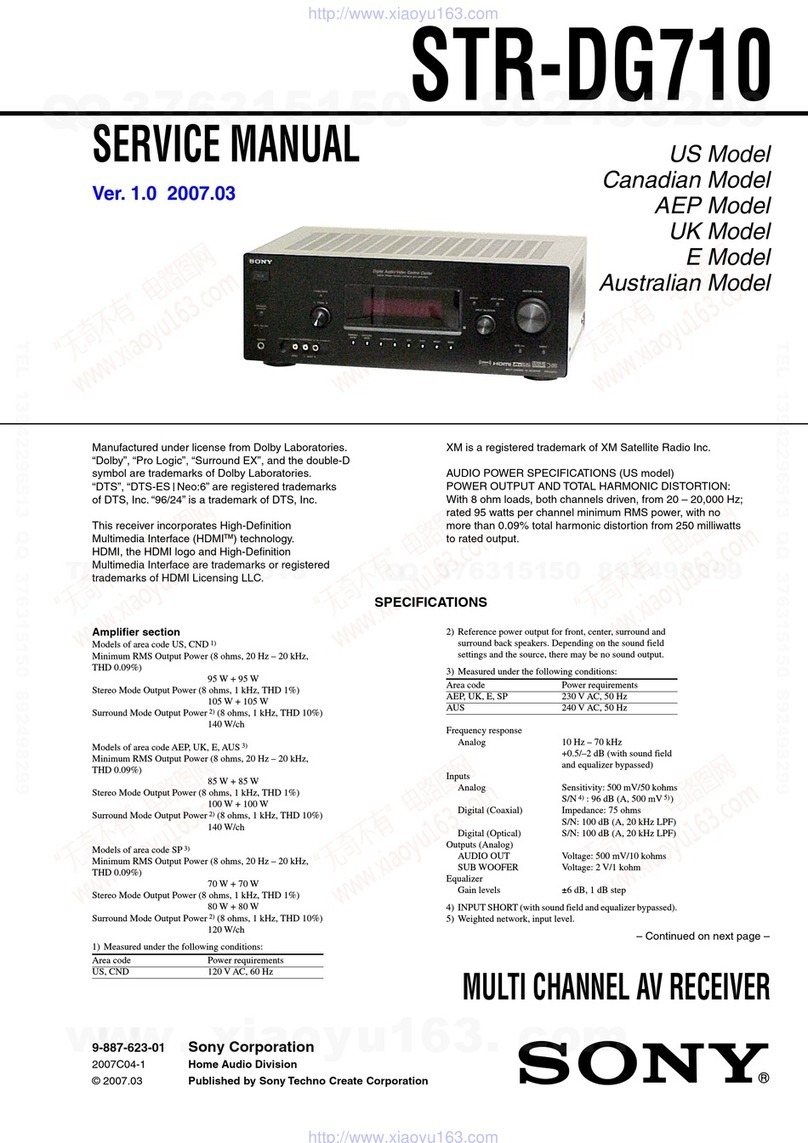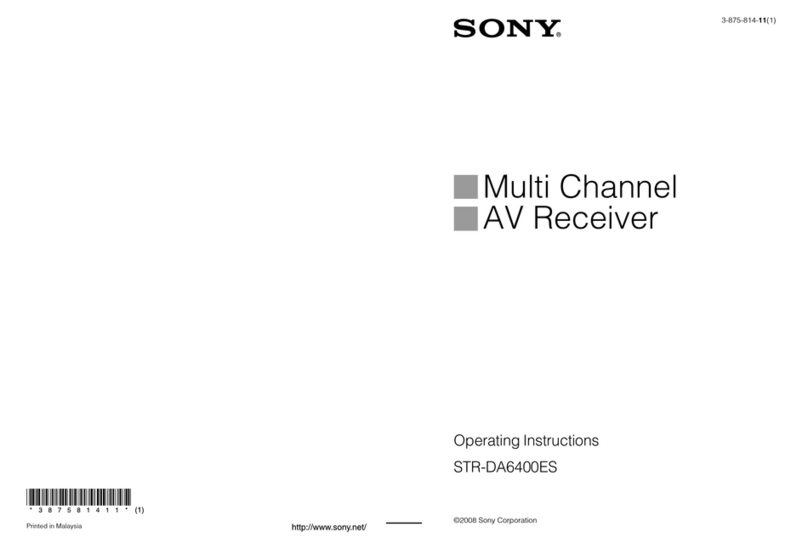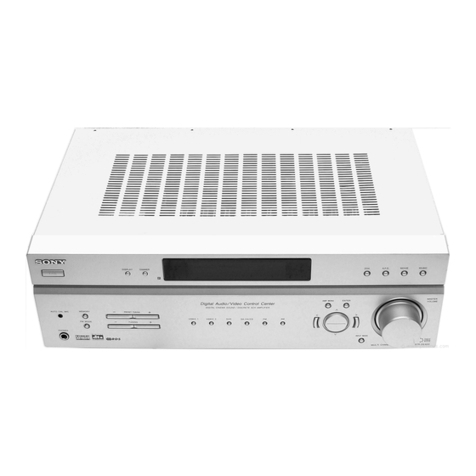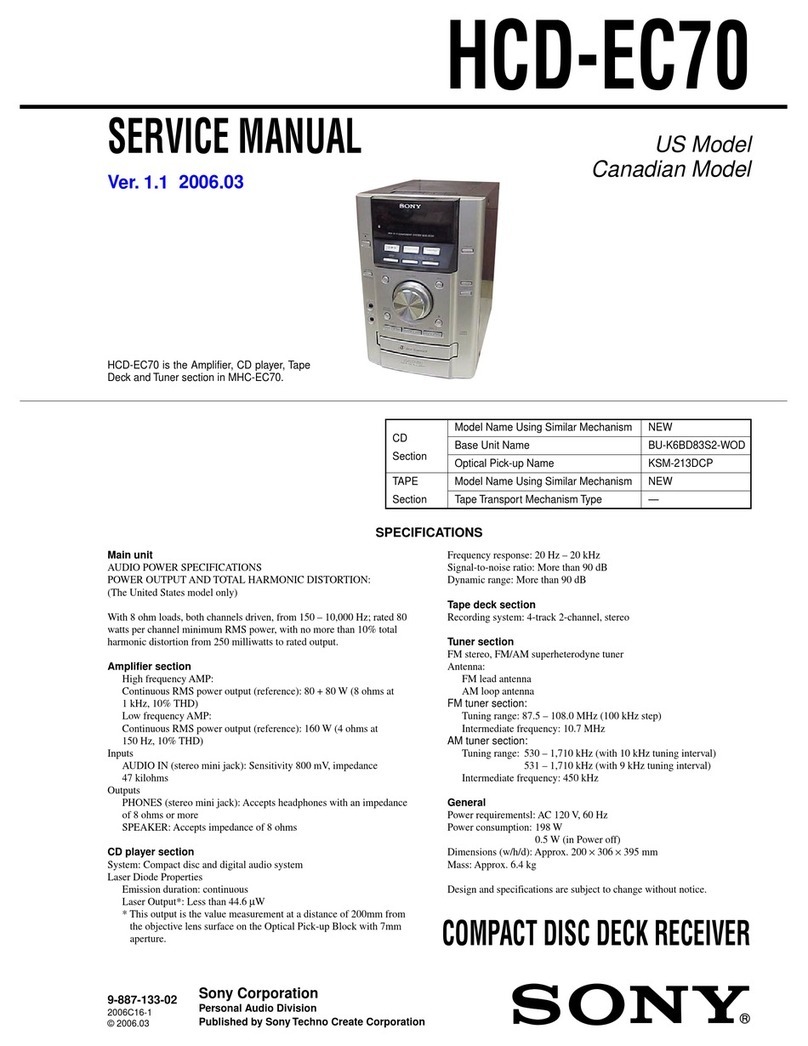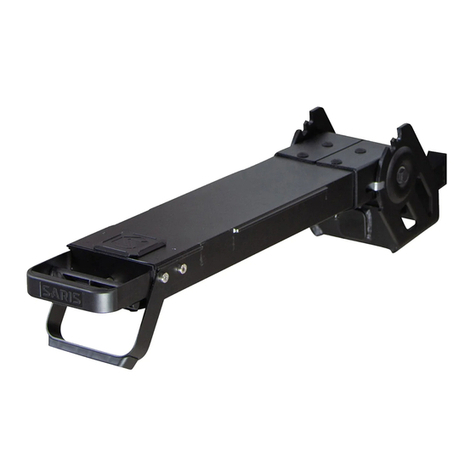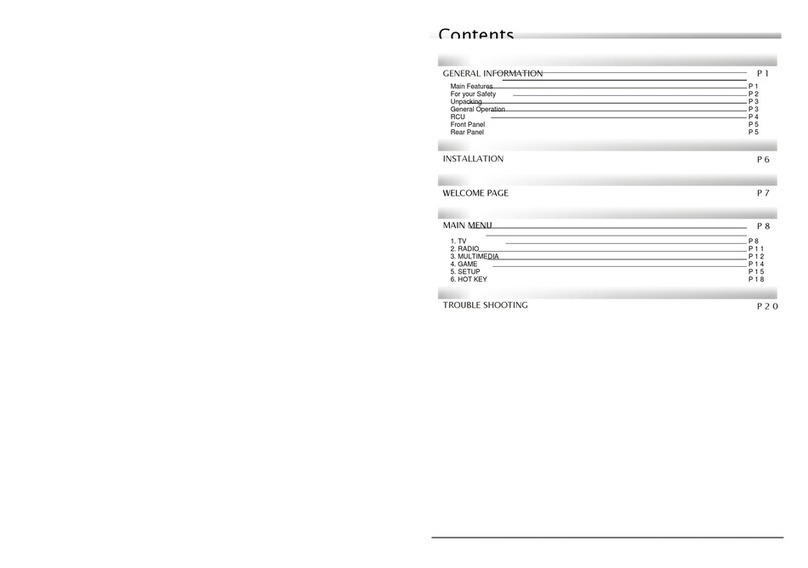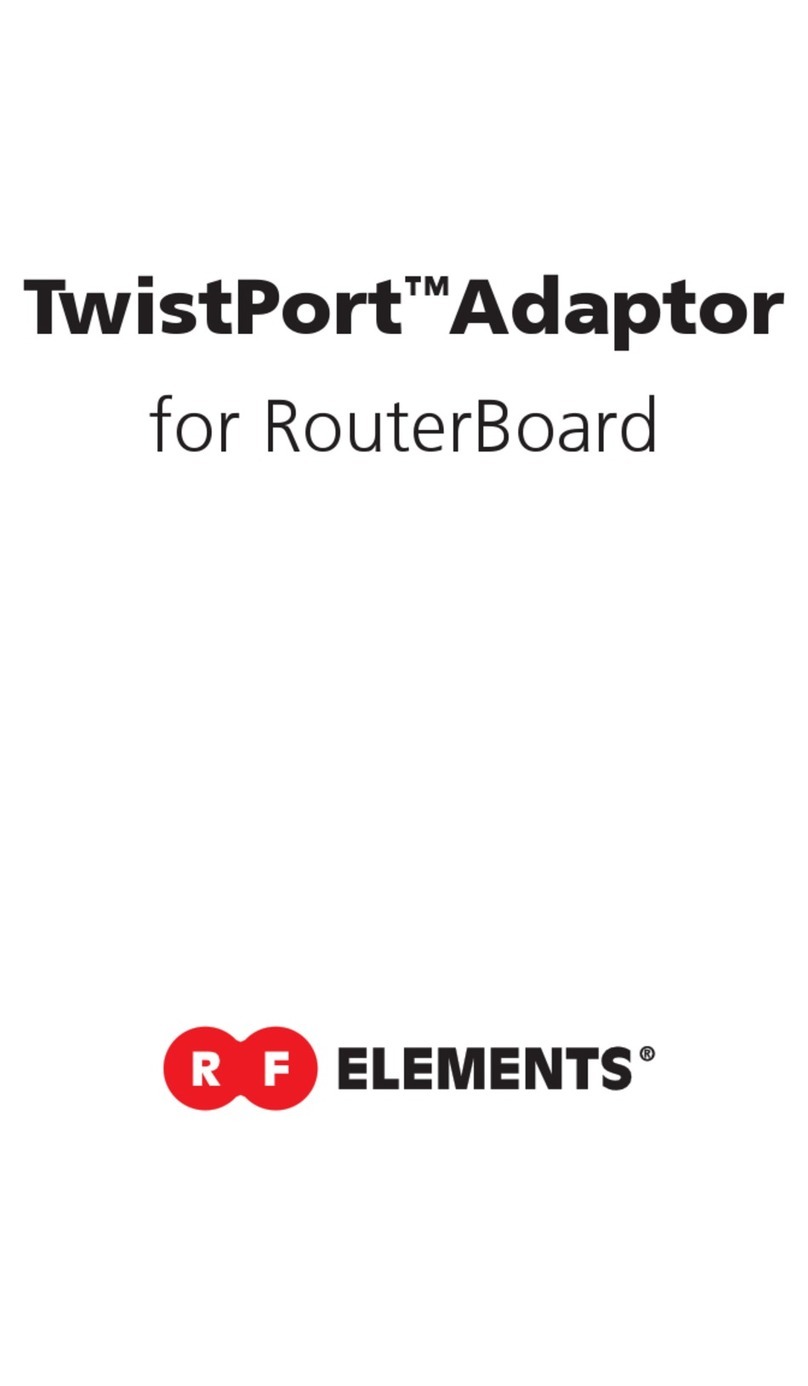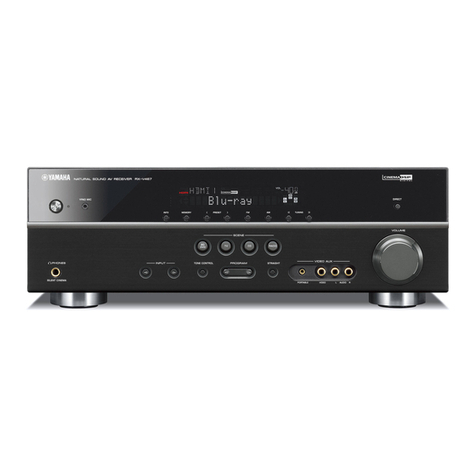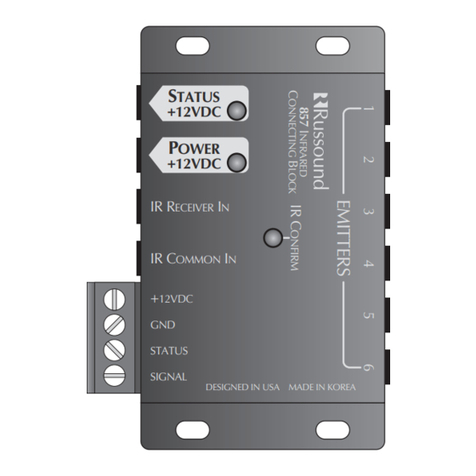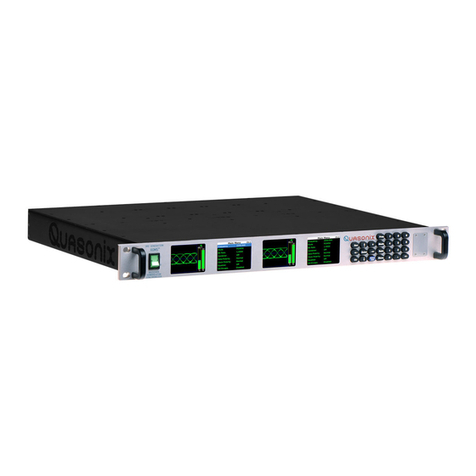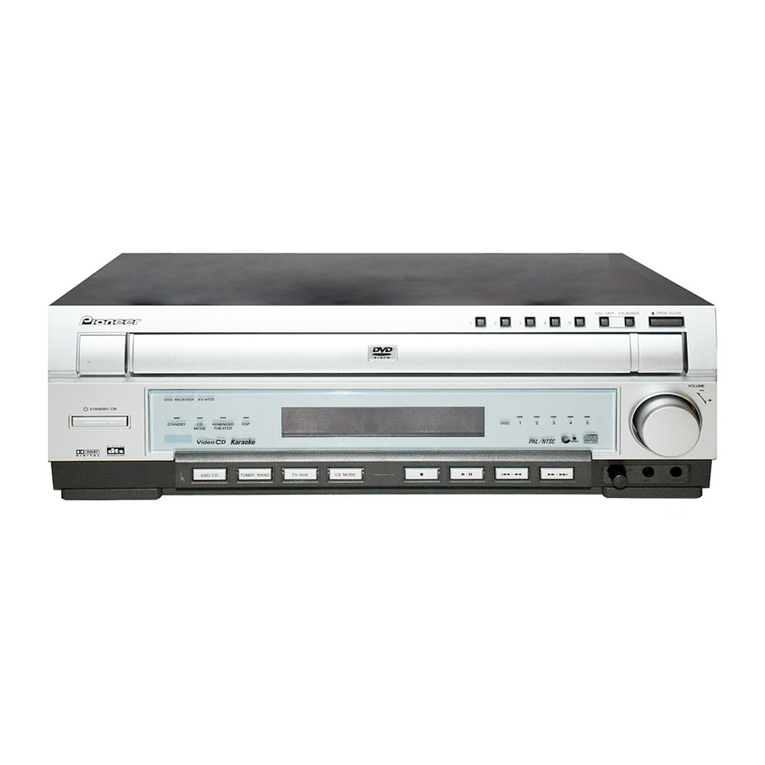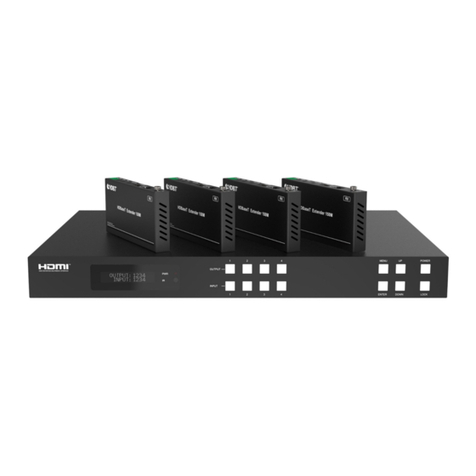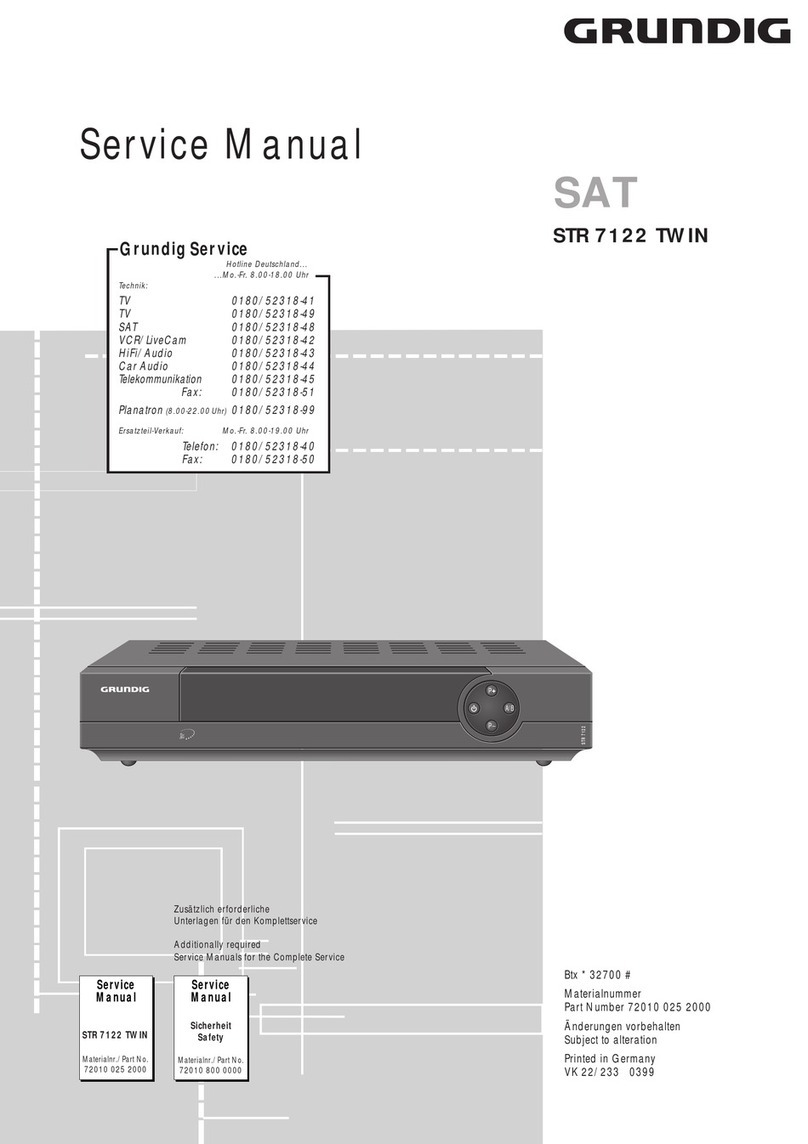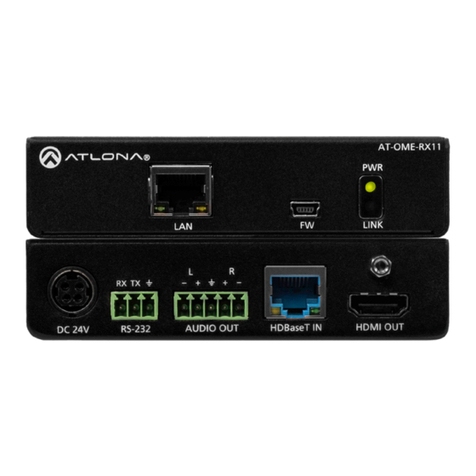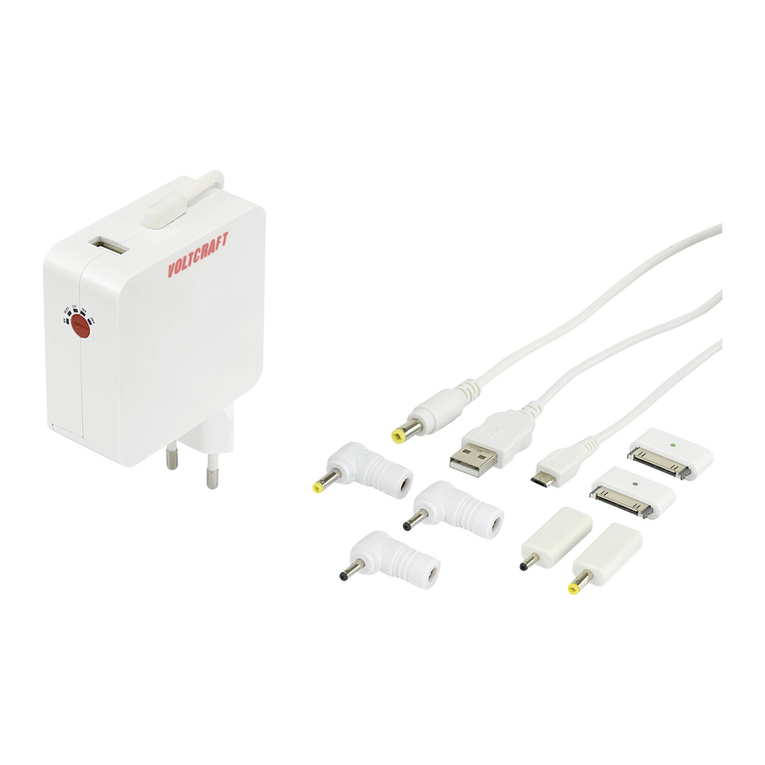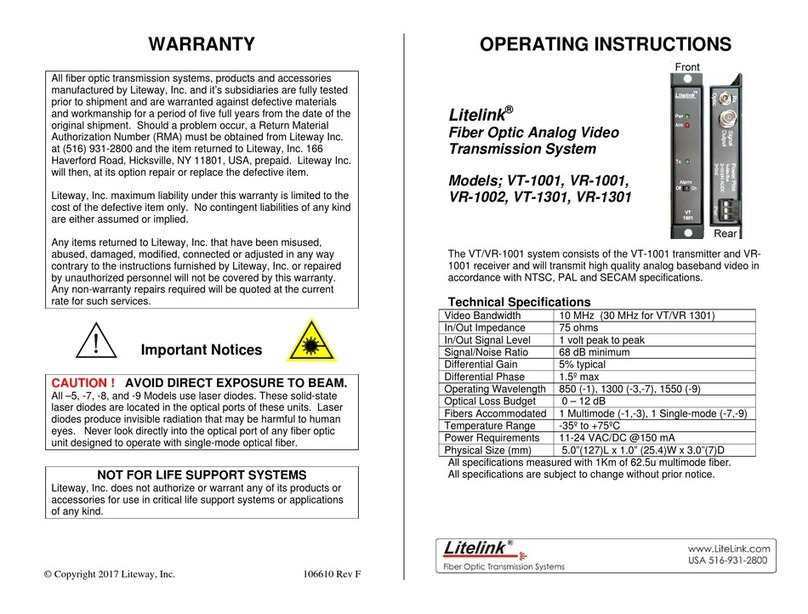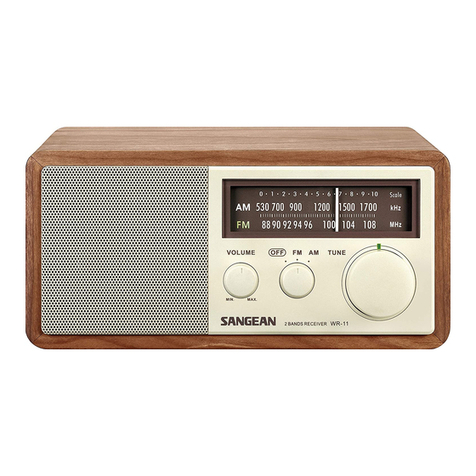
HBD-DZ170/DZ171/DZ175/DZ310/DZ510/DZ610/DZ810
2
SAFETY-RELATED COMPONENT WARNING!
COMPONENTS IDENTIFIED BY MARK 0OR DOTTED LINE
WITH MARK 0ON THE SCHEMATIC DIAGRAMS AND IN
THE PARTS LIST ARE CRITICAL TO SAFE OPERATION.
REPLACE THESE COMPONENTS WITH SONY PARTS
WHOSE PART NUMBERS APPEAR AS SHOWN IN THIS
MANUAL OR IN SUPPLEMENTS PUBLISHED BY SONY.
ATTENTION AU COMPOSANT AYANT RAPPORT
À LA SÉCURITÉ!
LES COMPOSANTS IDENTIFIÉS PAR UNE MARQUE 0SUR
LES DIAGRAMMES SCHÉMATIQUES ET LA LISTE DES
PIÈCES SONT CRITIQUES POUR LA SÉCURITÉ DE FONC-
TIONNEMENT. NE REMPLACER CES COMPOSANTS QUE
PAR DES PIÈCES SONY DONT LES NUMÉROS SONT DON-
NÉS DANS CE MANUEL OU DANS LES SUPPLÉMENTS
PUBLIÉS PAR SONY.
Super Audio CD/DVD System
(DAV-DZ170/DAV-DZ171/DAV-DZ175)
Laser Diode Properties Emission Duration: Continuous
Laser Output: Less than 44.6 μW
* This output is the value measurement at a distance
of 200 mm from the objective lens surface on the
Optical Pick-up Block with 7 mm aperture.
Signal format system NTSC
Super Audio CD/DVD System
(DAV-DZ310/DAV-DZ510/DAV-DZ610/DAV-DZ810)
Laser Diode Properties Emission Duration: Continuous
Laser Output: Less than 44.6 μW
* This output is the value measurement at a distance
of 200 mm from the objective lens surface on the
Optical Pick-up Block with 7 mm aperture.
Signal format system
Mexican and Latin American models:
NTSC
Other models: NTSC/PAL
USB Section
(USB) port:
Maximum current: 500 mA
Tuner Section
System PLL quartz-locked digital synthesizer
Tuning range
North American models: 87.5 MHz - 108.0 MHz (100 kHz step)
Other models: 87.5 MHz - 108.0 MHz (50 kHz step)
Antenna (aerial) FM wire antenna (aerial)
Antenna (aerial) terminals 75 ohms, unbalanced
Intermediate frequency 10.7 MHz
Video Section
Outputs VIDEO: 1 Vp-p 75 ohms
COMPONENT:
Y: 1 Vp-p 75 ohms
P
B/CB, PR/CR: 0.7 Vp-p 75 ohms
HDMI OUT: Type A (19 pin)
General
(DAV-DZ170/DAV-DZ171/DAV-DZ175)
Power requirements 120 V AC, 60 Hz
Power consumption On: 170 W
Standby: 0.2 W*
* Valid when the system is in the following status:
– “DEMO” is set to “OFF.”
– [CONTROL FOR HDMI] is set to [OFF].
Dimensions (approx.) 430 mm ×66 mm ×385 mm
(17 in ×2 5/8 in ×15 1/4 in) (w/h/d)
incl. projecting parts
Mass (approx.) 4.4 kg (9 lb 12 oz)
General
(DAV-DZ310/DAV-DZ510/DAV-DZ610/DAV-DZ810)
Power requirements
North American and Mexican models:
120 V AC, 60 Hz
Taiwan models: 120 V AC, 50/60 Hz
Argentine models: 220 V - 240 V AC, 50/60 Hz
Latin American models: 110 V - 240 V AC, 50/60 Hz
Other models: 220 V - 240 V AC, 50/60 Hz
Power consumption
DAV-DZ310/DAV-DZ510/DAV-DZ610
On: 170 W
Standby: Taiwan models: 0.2 W*,
Other models: 0.25 W*
DAV-DZ810 On: 175 W
Standby: 0.25 W*
* Valid when the system is in the following status:
– “DEMO” is set to “OFF.”
– [CONTROL FOR HDMI] is set to [OFF].
– “S-AIR STBY” is set to “STBY OFF.” (DAVDZ810 only)
Dimensions (approx.) 430 mm ×66 mm ×385 mm (w/h/d)
incl. projecting parts
Mass (approx.) 4.4 kg
Supported file format
MP3 (MPEG 1 Audio Layer-3)
File Extension: mp3
Bitrate: 32 kbps - 320 kbps
Sampling frequencies: 32/44.1/48 kHz
WMA (USB device only)
File Extension: wma
Bitrate: 48 kbps - 192 kbps
Sampling frequencies: 44.1 kHz
AAC (USB device only)
File Extension: m4a
Bitrate: 48 kbps - 320 kbps
Sampling frequencies: 44.1 kHz
DivX (DAV-DZ310/DAV-DZ510/DAV-DZ610/DAV-DZ810)
File Extension: avi/divx
Video codec: DivX video
Bitrate: 10.08 Mbps (MAX)
Frame rate: 30 fps
Resolution: 720 ×576
Audio codec: MP3
MPEG4
File format: MP4 File Format
File Extension: mp4/m4v
Video codec: MPEG4 Simple Profile (AVC is not compatible.)
Bitrate: 4 Mbps
Frame rate: 30 fps
Resolution: 720 ×576
Audio codec: AAC-LC (HE-AAC is not compatible.)
DRM: Not compatible
Design and specifications are subject to change without notice.
SPECIAL COMPONENT NOTICE
The components identified by mark 9contain confidential infor-
mation.
Strictly follow the instructions whenever the components are re-
paired and/or replaced.
NOTICE POUR COMPOSANTS SPÉCIAUX
Les composants identifiés par la marque 9contiennent des infor-
mations confidentielles.
Suivre scrupuleusement les instructions chaque fois qu’un compo-
sant est remplacé et / ou réparé.
